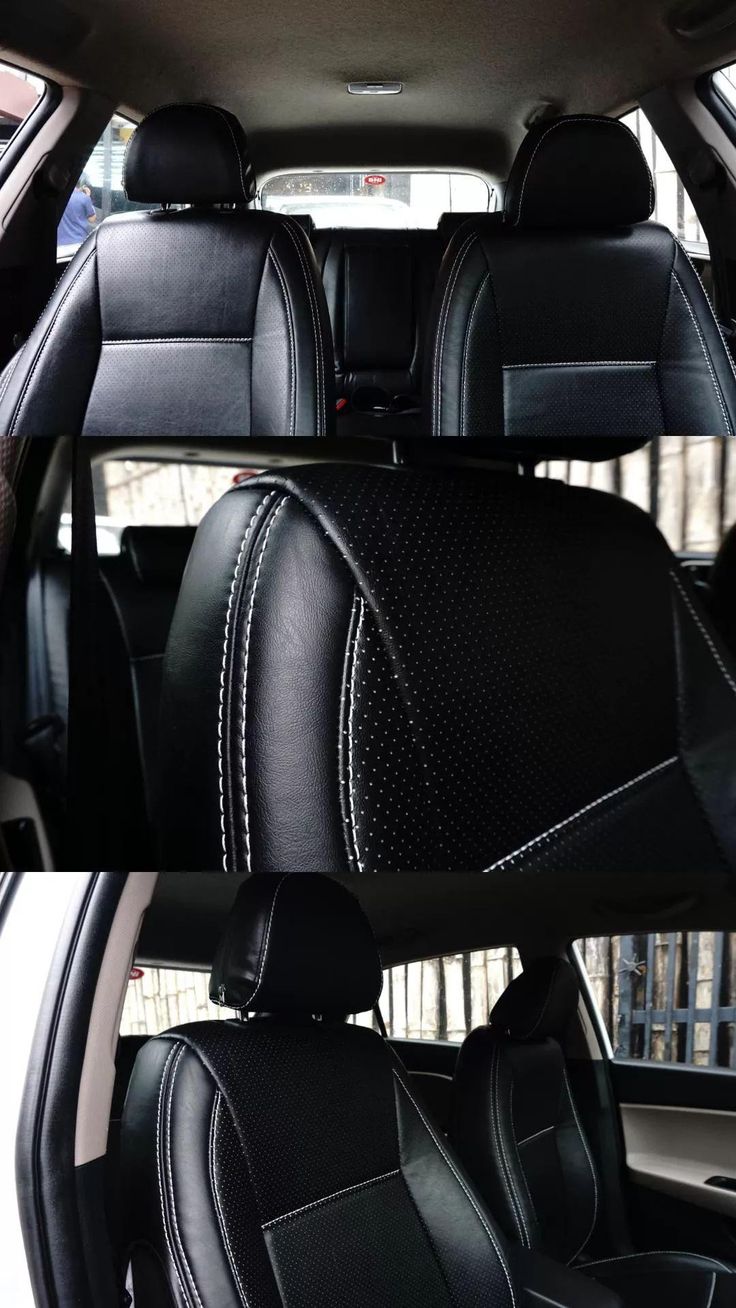What are the Disadvantages of Synthetic Leather? Find out the drawbacks now!
The disadvantages of synthetic leather include environmental impact and lack of breathability. Synthetic leather is known to be harmful to the environment due to the chemicals used in its production process, and it does not allow for proper air circulation, leading to discomfort and increased sweating.
Despite its affordability and durability, these drawbacks make it a less desirable option compared to genuine leather.
Disadvantages Of Synthetic Leather Unveiled
Importance of being informed about materials
Synthetic leather, also known as faux leather or pleather, has gained popularity due to its affordability and versatility. However, it is important to be aware of the disadvantages of this material before making a purchase decision.
1. Durability concerns: Unlike genuine leather, synthetic leather is often less durable and prone to wear and tear. It may not withstand extreme conditions or long-term use as well as real leather does.
2. Lack of breathability: Synthetic leather tends to lack breathability, which means it doesn’t allow air to pass through the material. This can lead to discomfort and sweating, particularly in warmer climates or during extended periods of use.
3. Environmental impact: Synthetic leather is typically made from petroleum-based materials. This means it requires the use of fossil fuels and chemicals in its production, which can have negative environmental consequences.
4. Limited aging benefits: One of the advantages of genuine leather is that it develops a unique patina over time, enhancing its appearance. In contrast, synthetic leather doesn’t age in the same way and can begin to show signs of wear without the same aesthetic benefits.
Understanding Synthetic Leather
Understanding Synthetic Leather: Synthetic leather, also known as faux leather or vegan leather, is a man-made alternative to genuine leather. It is composed of various materials like polyvinyl chloride (PVC) or polyurethane (PU) coated onto a fabric backing. This composition provides synthetic leather with its characteristic appearance and texture, mimicking the look and feel of real leather.
Composition of synthetic leather: The composition of synthetic leather typically includes a fabric layer that acts as a base, followed by a polyvinyl chloride or polyurethane coating. This coating is responsible for giving synthetic leather its durability and resistance to wear and tear. Additionally, synthetic leather may also contain other additives like plasticizers and stabilizers to enhance its performance and flexibility.
Comparison with natural leather: Despite its similarities to genuine leather, synthetic leather does have its disadvantages. One key drawback is its lack of breathability compared to natural leather. Synthetic leather is not as porous, which can lead to increased sweating and discomfort when used in warm conditions. Additionally, synthetic leather generally has a shorter lifespan and is less resistant to scratches and punctures compared to genuine leather.
Environmental Impact
Synthetic leather, also known as faux leather or pleather, poses several disadvantages with regards to its environmental impact. One major concern is its non-biodegradability, which means that it takes hundreds of years to break down in landfills. This leads to excessive waste accumulation and places a strain on already limited disposal sites.
Additionally, the manufacturing processes involved in producing synthetic leather can contribute to pollution. These processes often involve the use of toxic chemicals such as PVC and polyurethane, which can contaminate soil, air, and water sources. Moreover, the production of synthetic leather is energy-intensive, requiring significant amounts of electricity and fossil fuels.
This contributes to carbon emissions and exacerbates climate change. Overall, the environmental drawbacks of synthetic leather highlight the importance of exploring more sustainable alternatives.
Durability And Longevity Concerns
When considering synthetic leather, one should be aware of several disadvantages. Durability and longevity are major concerns with this material. Over time, wear and tear can become apparent, resulting in a degrading appearance. Synthetic leather is also susceptible to damage caused by scratching, punctures, or exposure to extreme temperatures. In comparison to real leather, synthetic leather tends to have a shorter lifespan, as it is less resistant to daily wear and can easily lose its shape and color.
These drawbacks make synthetic leather less desirable for individuals seeking a long-lasting and high-quality material. However, it is worth noting that synthetic leather can offer an affordable alternative to real leather, and its availability in various colors and textures may appeal to certain consumers.
Questions Of Comfort And Quality
The main disadvantage of synthetic leather is its lack of breathability. Unlike genuine leather, synthetic leather does not allow air to pass through the material, which can result in discomfort, especially in hot and humid weather. This can cause sweating and an unpleasant sticky feeling.
Another concern is the use of allergenic compounds in the production of synthetic leather. Some individuals may experience skin irritation when they come into direct contact with these chemicals.
In addition to the lack of breathability and potential for skin irritation, synthetic leather often lacks the texture and feel of genuine leather. Genuine leather has a unique grain pattern and a soft and supple feel that is difficult to replicate with synthetic materials.
Ethical And Social Implications
Synthetic leather, although popular for its affordability and versatility, comes with several disadvantages that can have ethical and social implications. One such concern is the working conditions in synthetic leather factories. Many of these factories are located in countries with lax labor laws, leading to poor working conditions, long hours, and low wages for employees.
This raises questions about the ethics of supporting an industry that prioritizes profit over the well-being of its workers.
Moreover, consumer perceptions and expectations also play a significant role in the disadvantages of synthetic leather. While some consumers may be aware of the ethical concerns associated with synthetic leather, others may be uninformed or unconcerned, choosing price and convenience over ethical considerations.
This demand perpetuates the cycle of unfair labor practices and potentially harmful environmental impact as synthetic leather production often involves the use of hazardous chemicals. It is important to weigh these ethical and social implications when considering the use of synthetic leather and to explore alternatives that offer sustainability, transparency, and fair working conditions.
Economic Drawbacks
When considering the disadvantages of synthetic leather, there are a few economic drawbacks that are worth mentioning. One of the main concerns is the resale value of items made from synthetic leather. Unlike genuine leather, synthetic leather does not age or develop a patina over time, which can affect the perceived value of the item.
Additionally, synthetic leather is often seen as less luxurious and high-quality compared to genuine leather. This can impact the cost-effectiveness of purchasing items made from synthetic leather, as they may need to be replaced more frequently. The quality versus price consideration is another aspect to consider.
While synthetic leather is generally cheaper than genuine leather, it may not have the same durability and longevity, leading to the need for more frequent repairs or replacements.
Disadvantages In Fashion And Aesthetics
Synthetic leather, though more affordable and cruelty-free, lacks the luxurious appeal of genuine leather. One of the major limitations of synthetic leather in the realm of fashion and aesthetics is its challenge in replicating the authentic look and feel of real leather. While advancements have been made in creating realistic textures, synthetic leather can still be easily distinguished from the genuine counterpart by avid leather enthusiasts.
Moreover, the fashion industry has a mixed stance on synthetic leather. While some brands have embraced it as an eco-friendly alternative, others prioritize the exclusivity and premium quality associated with genuine leather. The perception of synthetic leather as a lower-quality material can impact its acceptance within the luxury fashion market, making it more suitable for casual or fast-fashion applications where price and accessibility take precedence over authenticity.
Care And Maintenance Hurdles
Although synthetic leather offers numerous benefits, it also comes with its fair share of disadvantages. One major hurdle is the care and maintenance it requires. Cleaning requirements can be more demanding compared to genuine leather, as the material is sensitive to certain cleaning agents and methods.
It is crucial to avoid abrasive cleaners or harsh chemicals that can cause damage. Protective measures such as using leather conditioners or applying a protective coating can help extend the life of synthetic leather, but these steps may also involve additional costs and effort. Another notable limitation is that synthetic leather may have repair and restorative limitations.
While minor scratches or scuffs can often be addressed, major damage or tears can be challenging or impossible to fix, leaving you with no choice but to replace the entire item.
Performance Under Extremes
One of the major disadvantages of synthetic leather is its performance under extremes. Synthetic leather can have a poor reaction to extreme temperatures. It may become stiff and rigid in cold temperatures, making it uncomfortable to wear or use. On the other hand, when exposed to high temperatures, synthetic leather can melt or become deformed, losing its shape and durability.
In addition to its reaction to extreme temperatures, synthetic leather also has limited environmental resistance properties. It is prone to fading and discoloration when exposed to sunlight for extended periods of time. It may also be less resistant to certain chemicals, making it susceptible to damage from spills or contact with abrasive substances.
Synthetic Leather In The Market
Synthetic leather, despite its popularity and widespread use, comes with its fair share of disadvantages. One major drawback is the availability of higher quality alternatives in the market. While synthetic leather may be a cheaper option compared to genuine leather, there are other materials such as microfiber leather and polyurethane (PU) leather that offer similar benefits at a higher quality.
Another disadvantage is that synthetic leather lacks the natural grain and texture of genuine leather, which can be a deal-breaker for some consumers who prefer the luxurious look and feel of real leather. Furthermore, synthetic leather has a shorter lifespan compared to genuine leather, as it tends to wear and tear more quickly, especially with regular use.
In addition, synthetic leather is not as breathable as genuine leather, making it less comfortable to wear for extended periods. It can also be prone to cracking and peeling over time, especially if not properly cared for. Moreover, synthetic leather often fails to provide the same level of durability and strength as genuine leather, making it less suitable for certain applications that require robust materials.
Despite its disadvantages, synthetic leather continues to be widely used in various industries due to its affordability and availability. However, as market trends shift towards sustainability and eco-friendly alternatives, the future of synthetic materials, including synthetic leather, may face challenges, as consumers become more conscious of the environmental impact and seek out greener options.
Assessing The Synthetic Leather Lifecycle
Synthetic leather has drawbacks, including its limited durability, potential environmental impact, and non-breathable nature. However, it offers cost-effective alternatives and doesn’t require animal cruelty, making it a popular choice in certain industries.
Production To Disposal Journey
Synthetic leather, despite its popularity as a more affordable alternative to genuine leather, comes with its fair share of disadvantages throughout its lifecycle. Production of synthetic leather involves the use of chemicals and petroleum-based materials, contributing to pollution and greenhouse gas emissions. These environmental challenges continue as synthetic leather faces recycling and upcycling difficulties.
| 1. Limited recycling options | Synthetic leather is not widely accepted in recycling facilities due to the complexity of separating its various components, including plasticizers and synthetic fibers. |
| 2. Lack of biodegradability | Unlike genuine leather, synthetic leather does not break down naturally over time, leading to long-term environmental impact and waste accumulation. |
| 3. Difficult upcycling process | Transforming synthetic leather into new products through upcycling can be challenging due to its mix of non-renewable materials. |
| 4. Poor end-of-life disposal | When synthetic leather reaches the end of its usable life, it often ends up in landfills, further contributing to waste and pollution. |
Considering the environmental impact and limited recycling options, it is important to assess the disadvantages of synthetic leather and explore more sustainable alternatives for a greener future.
Frequently Asked Questions On What Are The Disadvantages Of Synthetic Leather?
What Are The Drawbacks Of Synthetic Leather?
Synthetic leather has some disadvantages. It is not as durable as real leather and may crack or peel over time. It is also less breathable, which can make it uncomfortable to wear for long periods. Additionally, the production of synthetic leather involves the use of harmful chemicals, which can have negative environmental impacts.
Conclusion
To summarize, while synthetic leather offers affordability and versatility, it comes with its fair share of disadvantages. From its limited breathability to its inability to develop a natural patina, synthetic leather may not provide the same level of comfort and durability as genuine leather.
Moreover, its environmental impact in terms of production and disposal cannot be overlooked. Therefore, when considering leather alternatives, it is crucial to weigh the pros and cons to make an informed decision.
- Can I Get in a Taxi Without a Car Seat? - January 26, 2025
- Can I Get Chlamydia From a Toilet Seat? - January 26, 2025
- Can I Get an Uber With a Car Seat? - January 26, 2025






